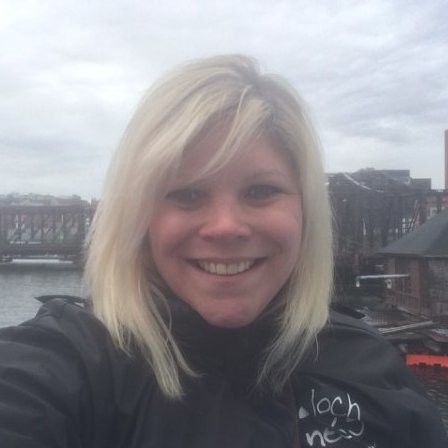Every long-term care facility has a website, but many don’t have a digital marketing strategy and fail prospective customers
For Matt Perrin, perusing senior care facility websites is a major component of his job. As founder of the online senior care review website Ro & Steve, Perrin looks at dozens of senior care facility websites every day as new reviews from consumers roll in. In all that perusing, Perrin has found that many of these sites look the same and offer little insight into their people — both staff and residents — and what sets them apart.

Matt Perrin, founder of the online senior care review website, Ro & Steve
That lack of originality or authenticity only makes the decision-making process harder for would-be clients and residents, Perrin says. And he knows from personal experience as a consumer as well as an industry insider. Having been through the exercise of arranging care for his mother, Rosemary, who has Alzheimer’s, and his father-in-law, Steve, who has Lewy body dementia, Perrin found that navigating many of these websites offered little real insight into what a community will actually be like.
“When my wife Lindsay and I were going through this process of looking at which communities and home care agencies we wanted to consider, the biggest observation we had was that on the internet, this industry seems like just one big giant sea of sameness. They’re all using the same stock imagery and using the same jargon and buzz words.” This makes it really difficult for consumers — who often prefer to get a sense of a community online before they make actual contact — to understand what you do well or differently from another facility elsewhere in town.
“The reality of it is, it’s a human business,” Perrin says. Even for a senior living company with 25 or 50 communities in their portfolio, “they typically deliver a streamlined marketing message on their corporate website about person-centered care and what makes their community special. The reality is it’s the people inside those individual communities — the people who are leading them and doing the frontline work and the residents who make them special.”
So how can you make your own website better and bring more of the right kind of resident to your doorstep? Perrin recommends being courageous, honest, and open about what makes your community the great place it is. “There’s just a huge need and opportunity for operators and services providers to get smarter about how they market to potential residents and clients,” Perrin says.
Build a Digital Personality
It’s also wise to connect and cross-brand your website with any social media accounts you use, such as:
- Twitter,
- Facebook,
- Instagram,
- LinkedIn.
Connecting these online properties and aligning them with your facility’s branding that truly shows off what makes you, well you, rather than standard stock photography — can make clients, their families and potential clients all feel like they have a much better understanding of what makes your community unique and worth investigating further. Rather than seeing this as just another burden, Perrin encourages facility owners and operators to “see these online domains as an opportunity to connect with potential residents and their families as well as the families of current residents and clients.”
Embrace Honest Reviews
Another way to help people understand what your community is about is by embracing online reviews, whether that means publishing reviews on your own site or featuring links to other review sites like Ro & Steve. Perrin says his company aims to “be an authentic place online where people can have an authentic conversation,” about what senior living communities are actually like. “The primary vehicle is reviews,” but over the course of the few years they’ve been up and running, Perrin has created a database of 70,000 or so entries for home health care agencies, assisted living facilities, nursing homes and other senior care facilities.
As he meets with facility operators and owner, Perrin says he often hears “they want to control that review pipeline,” and some will try to steer only those individuals who are satisfied or happy with the residence to leave a review. Some facilities have a robust workflow where a positive survey response will result in a request to that respondent to leave a more in-depth review or testimonial.
But to offer a more holistic and complete understanding of what a community is actually like, Perrin says it’s important to present the not-so-glowing reviews as well and be honest about what your community is and isn’t. It can’t be all things to all people, and highlighting those differences may actually bring seniors who are better suited to your strengths than if you just try to look like all the others.
“The services they’re offering are incredibly important and incredibly emotional. There’s a high cost of failure with the decision being made by the consumer. Deciding where to relocate a loved one so they can have the highest quality of life possible is high stakes, and yet not all purveyors are trying to be helpful,” in allowing consumers to make the decision with eyes wide open, Perrin says.
Learn about SEO
In addition to these less tangible elements, every website should also include some concrete elements that help clients and would-be clients find you, namely search engine optimization. Bloom Marketing, a full-service marketing agency serving senior living clients, reports that search engine optimization or SEO “is the process of getting traffic from the ‘free,’ ‘organic,’ ‘editorial,’ or ‘natural’ search results on search engines.” For example, when a would-be client types the terms “senior living facility near me” into the search bar on Google or Yahoo, your website should be among the top hits if you’ve employed appropriate SEO terms on your site.
It works because search engines like Google constantly trawl the web looking for key terms, words, and phrases that users search for. The more of those that are embedded in your site, the more likely you are to show up at the top of the results page. This makes you easier to find. The challenge is to work those terms into your content in a way that still reads as authentic and doesn’t stand out as just a ploy to attract more eyeballs. That takes practice, and you might want to contact a SEO consultant to help guide any updates you make to this aspect of your online presence.
Make the Effort
Combine that discoverability with a compelling, authentic message, and chances are good more would-be clients will seek to take a tour or learn more about your community. All of this can combine into a smarter, more efficient marketing strategy that may grow your bottom line while actually helping the right seniors find “home” in your community.
It may take some time, money, and concerted effort to improve your community’s online presence, but because so many families rely heavily on what they see online to make decisions about senior care, “the return on those investments will cascade. It’s competitive on the internet. But communities that connect with clients and families can build engagement over time, which will provide significant value,” Perrin says
As more of our lives take place online, creating an authentic, visible, and highly accessible way to show off who you are and how you care for seniors is wort the effort. Start with a critical assessment of your current web presence. If your site looks like all the others, it may be time to make some adjustments.

Elaine K. Howley is a freelance journalist for various publications. An award-winning writer specializing in health, fitness, sports and history, her work has appeared in numerous print and online publications, including U.S. News, AARP.org, espnW, SWIMMER magazine and Atlas Obscura. She’s also a world-record holding marathon swimmer with a passion for animals and beer. Contact her via her website: elainekhowley.com.
